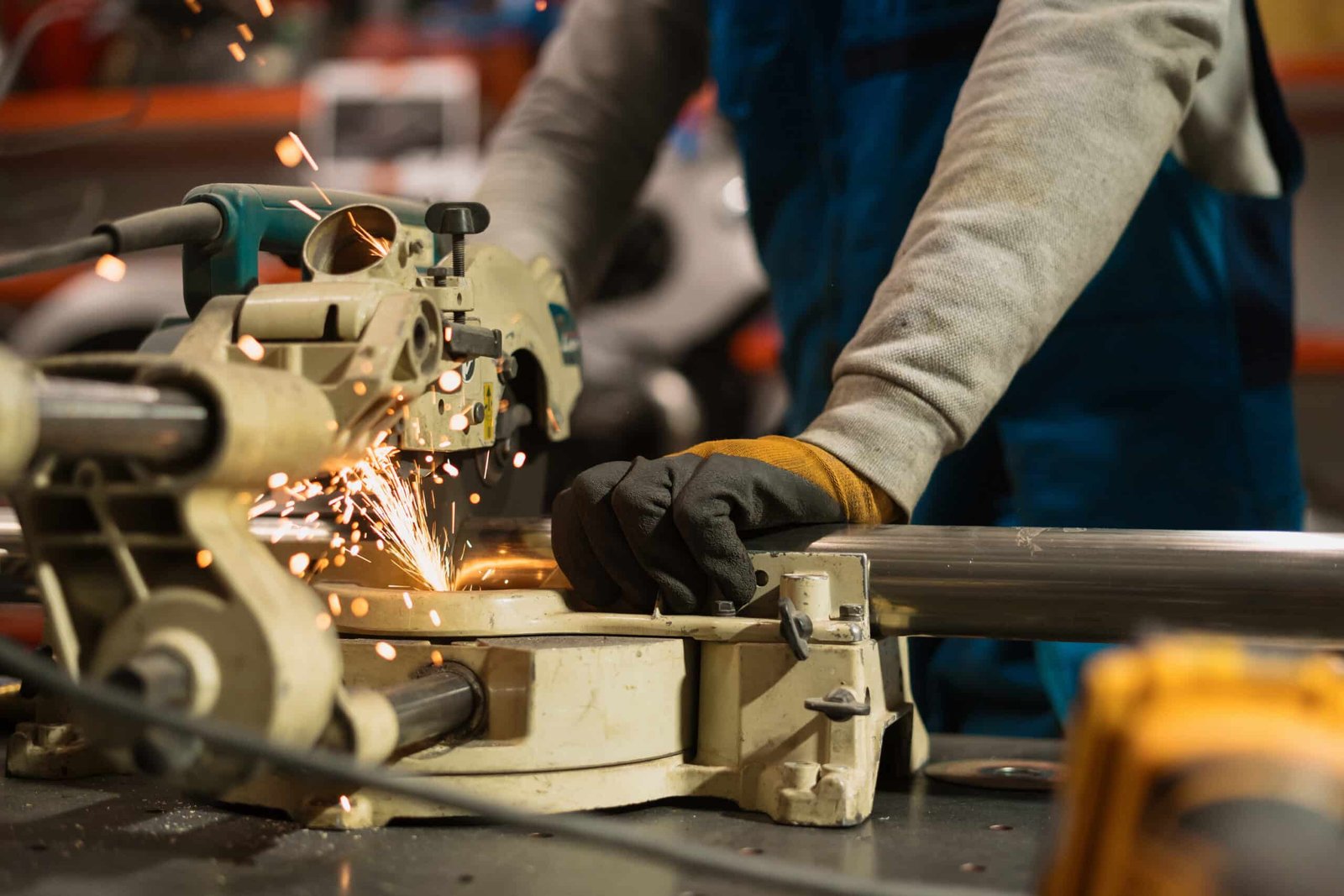The employment trends in the metals and engineering sector are an important indicator for the underlying structural constraints that have plagued the sector for the last decade and a half. The sector currently employs 362 871 people, which is a significant drop from the 577 507 people employed in 2008. This equates to a decline of 214 636 jobs, or 37.2% and when measured on a compound basis, represents a 2.9% decline per annum over this period.
Employment in the sector has decreased at double the rate production has decreased over the same period. Considering the steel sectors induced economic multiplier of 2.7 times, the employment multiplier of 6 times and the dependency ratio of between 7 to 10 people relying on each formal job, the sectors employment trends spell wide scale social and economic disaster.
The steel and engineering sector is crucial to the South African economy, it is the backbone of the country’s industrial base which is akin to none on the continent. Apart from the traditional arguments of the virtues of the manufacturing sector which include the productivity gains to economic growth, higher income elasticity of demand for manufactured goods and the spill over of growth to non-manufacturing sectors in response to growth in manufacturing output, the steel and engineering sector is also a strategic avenue through which the country converts its vast mineral endowment to final engineered products. This locks in a higher degree of value add domestically.
The value chain represented in the sector constitutes the entire metals value chain from metal production (ferrous and non-ferrous), merchants and service centres, metal fabrication to heavy and light engineering. The sector is a crucial supplier of inputs into sectors such as agriculture, mining, the automotive sector, construction, the electricity supply industry across all its facets, logistics and water sectors. Moreover, the sector is export intensive, with 40% of total production being exported, raising the country’s foreign exchange receipts by USD $20 billion annually.
Despite the sectors far-reaching impact and diversified demand profile the innate potential is unfortunately not being realised. The recent announcement by ArcelorMittal South Africa (AMSA) on the closure of its operations in Newcastle and Vereeniging, as well as ArcelorMittal Rail and Structural bears testament to this. The prospect of this development materialising is a major cause of concern which will only add to exacerbating the downward spiral to employment in the sector.
The long products operations under consideration include the country’s only local mill capable of producing long steel from iron ore which are critical in industries such as construction, automotive, mining, electro-technical, electricity transmission, rail, wire and fasteners industry. The reliance of these downstream industries is not a preference question but rather higher quality and safety specifications. Faced with the prospect of a lack of domestic supply, these downstream industries will have no alternative but to look to import their feedstock, which translates to the loss of much needed domestic jobs, further deepening the unemployment crisis.
The intrinsic nature of risk mitigation for businesses is to act on eliminating potential risks before they become events, meaning that the horse may have already bolted in a number of instances. When import alternatives are bedded down, they are likely to become entrenched thereby structurally altering the industrial landscape permanently, to the detriment of South Africa’s industrialisation aspirations and fortunes.
Of the 362 871 employed in the sector, the downstream industries account for 90% of the employment with the balance being employed in the upstream. This number has evolved from 80% (downstream) and 20% (upstream) over the last 15 years. The sector employed 577 507 people at the peak of 2008. Although the job losses have been felt across the entire value chain, they have mostly been concentrated in the downstream industries, which have accounted for 60.2% of the losses recorded over this period. The point being that the propensity of the sectors employment losses, as a result of the structural vulnerabilities and headwinds faced by the sector, mostly materialise through employment losses in the downstream industries. It is therefore reasonable to conclude that the impact of the plant closures will mostly be felt in the downstream where the bulk of employment resides. Of even greater concern is that a number of companies in the downstream have started estimating the business cases of importing their final product as opposed to semi-finished products (billets, blooms, etc.,) for further processing locally. This will have even wider employment ramifications by eliminating other intermediate processes like forging, galvanising and packaging, thereby converting many existing factories into distribution warehouses.
Another important structural dynamic emanating from the employment trends is a continued decoupling of the relationship between employment and production i.e., increases in production is becoming a less sufficient condition for employment creation. The latest estimates indicate that a 4.7% increase in production is required to induce a 1% increase in employment. An alternative approach to confirm the analysis is the fact that between 2008 and 2023 production has decreased at a rate of -1.3% (CAGR) while employment has decreased at -2.9% (CAGR). Given globalisation and greater levels of mechanisation, this phenomenon is not entirely surprising, however, the data indicates that periods of deep structural adjustment, like the 2007/8 global financial crisis, COVID lockdowns and periods of production disruption as a result of industrial action have tended to worsen the trend. The AMSA plant closures, which will present a major headwind for the sector, followed by a deep and painful structural adjustment, will deepen the decoupling pattern.
In the final analysis, the reasons for the AMSA plant closure are structural, namely: low economic growth, anaemic gross fixed capital formation, electricity and logistics challenges. These are factors faced by companies in the entire value chain and without urgent intervention and reform are unlikely to be resolved in the medium term. It is conceivable therefore that in the absence of reform, the rate of employment declines observed thus far can be projected into the medium term with some modifying factors applied to account for the AMSA closure.
Taking into account the 3500 employees that will be directly affected by the plant closures, projecting the 2.9% (CAGR) rate of decline across the entire steel and engineering sectors employment and applying the steel sector employment multiplier, on a five-year horizon, SEIFSA’s estimates the employment losses could amount to a staggering 293 754 direct and indirect job losses.
This is an outcome that South Africa, given its already untenable unemployment rate, can ill-afford. Doing everything possible to finding lasting solutions to averting the announced plant closures should dominate our and governments agenda, failing which industry and the economy will be left to deal with a catastrophic socioeconomic jobs crisis of unimaginable proportions.

